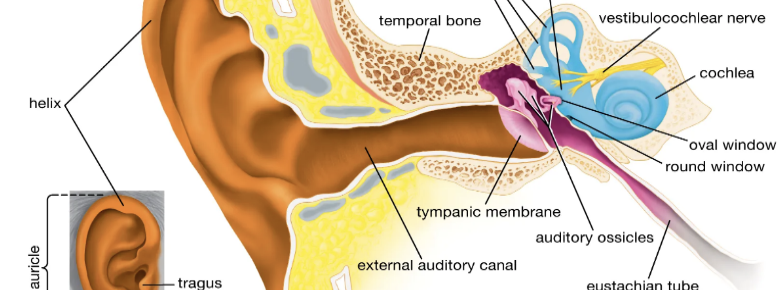By: Dylan
Have you HEARD that your ear controls your balance and so much more?
Your ear does a lot more than just give you the ability to hear. The ear is separated into three sections: the inner, middle, and outer ear. These three components form what we call the vestibular system.
The vestibular system is a sensory system that is responsible for providing our brain with information about motion, head position, and spatial orientation; it also is involved with motor functions that allow us to keep our balance, stabilize our head and body during movement, and maintain posture. Thus, the vestibular system is essential for normal movement and balance.
How on earth does Physiotherapy fit into all of this?
Great question!
Vestibular rehabilitation therapy involves exercises that help you manage dizziness and balance issues (imbalance). This therapy may help people cope with the symptoms of conditions such as vertigo and labyrinthitis. Vestibular rehabilitation therapy takes time, but it can improve your quality of life.
Dizziness and balance go hand-in-hand. Vestibular rehabilitation therapy helps you manage dizziness symptoms, including imbalance. To understand how therapy works, it may help to know more about why you may feel very dizzy and how your body manages to balance.
Dizziness
Dizziness happens when something affects your sense of spatial orientation. Spatial orientation is your brain calculating the position of your body in relation to your surroundings. When that happens, you may feel woozy or lightheaded. You also may feel unsteady, as if you’ve lost your sense of balance.
Balance
Your sense of balance relies on the relationship between your central nervous system (brain) and your sensory system. Your sensory system includes:
Your vestibular labyrinth in your inner ear: This includes your semi-circular canals (loops), which react when you turn your head, and otolith organs that respond to gravity and movement.
Your vision: Your eyes send your brain impulses that show where your body is in relation to other objects.
Your skin, joints, and muscles: When your body moves, it puts pressure on your tissues. Your tissues send signals to your brain, telling it where your body is in relation to space. For example, if you’re standing up and you lean back, you put pressure on tissues in the back of your foot and lower leg. That pressure lets your brain know you’re leaning instead of standing straight.
Your central nervous system pulls this information together so it can tell your body how to maintain balance. When something interferes with the system’s connection, your central nervous system can’t process information correctly. Vestibular rehabilitation therapy helps restore those connections, ultimately reducing your symptoms of dizziness and imbalance.
CW Physio’s is here to help! Do you or a loved one need assistance with vertigo or other balance issues?
Give us a call and set up an appointment today.

